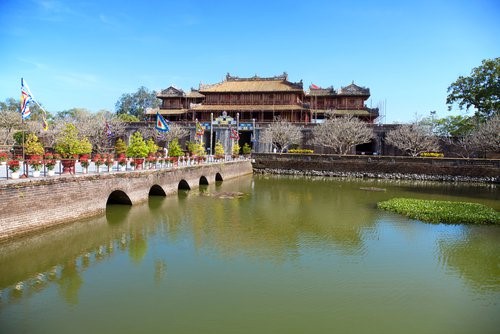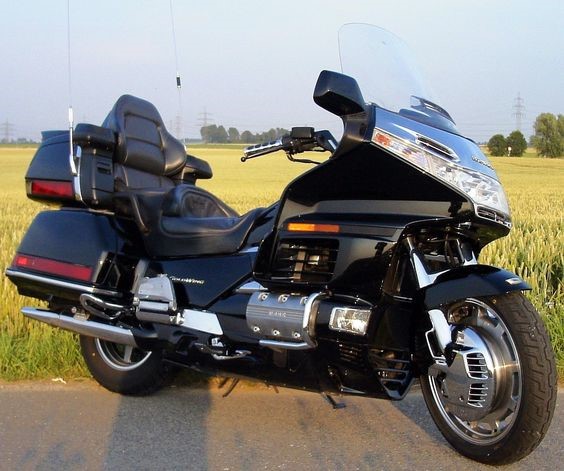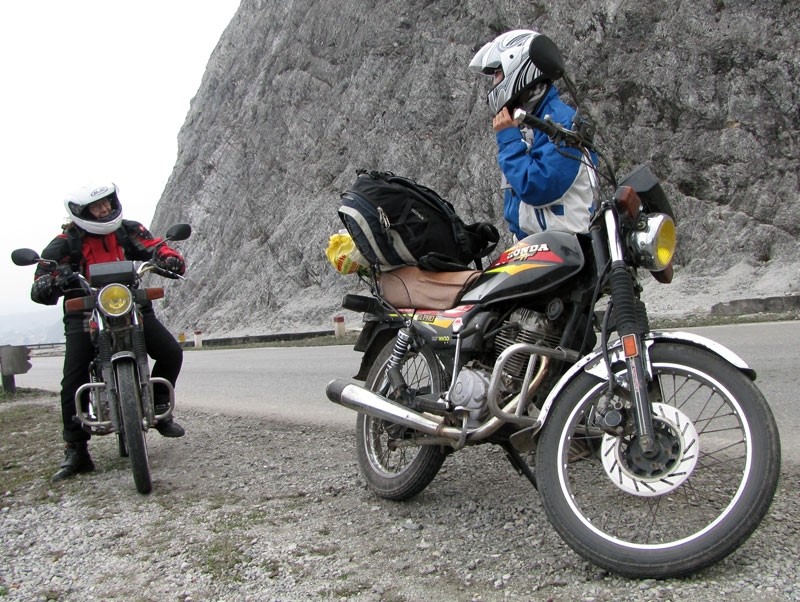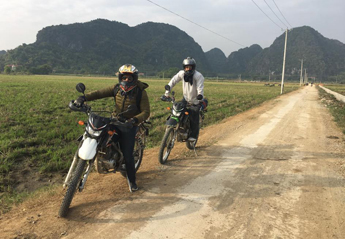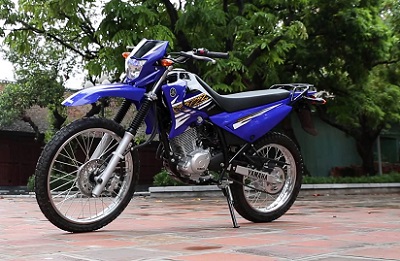Motorcycling in Vietnam

Always keep your eyes forward and slow down at every intersection...
If you and another are both converging on the same spot then who make the first evasive move (to the left or right) is the action that both of you should then follow. You are not bonded by notions of right or wrong driving rules from back home - if the guy turn to avoid you and it means he is heading into traffic and even if it is on the wrong side of the road, then it is good practice.
By following the first move, everyone knows each other’s intention. If you are heading straight at someone then communicate to the other person by giving your handle-bars a bit of a turn in the direction you are committing yourself to indicate to them what you are about to do. Whatever you indicate will then lock you into a non-collision situation.
By following the first move, everyone knows each other’s intention. If you are heading straight at someone then communicate to the other person by giving your handle-bars a bit of a turn in the direction you are committing yourself to indicate to them what you are about to do. Whatever you indicate will then lock you into a non-collision situation.
If someone is walking across a busy street without looking then turn so go behind them...
This will enable them to keep moving forward instead of getting stuck waiting for some space in front of them. This rule perhaps more than any other is the one behind the fluidity of the traffic. People always go behind, not in the front of the blocking entity. This then allows the object to keep moving and thereby keep the roads open. Be particularly wary of kids playing soccer or badminton on the pavement, old deaf dogs, cows and buffaloes. Give them a blast on your horn, slow down and pass them on the other side of the road.
Remember that larger, moving vehicles can often hide other bikes behind them..
That can cause havoc if you make some false assumptions at intersections when blindly cutting in front of larger vehicles either traveling parallel or at right angles with you. When you are turning then indicate with your arms as well as your indicators and make long, curved turn - never slow down to an all most stop and then turn sharply - you will be taken out. If crossing a busy intersection then move into the “down traffic” side of another vehicle. The guy’s “traffic shadow” will buffer you against other traffic and you can then cross no problems. Otherwise, do what the Vietnamese do, which is to cross right in the middle of it. Do not make any sudden jerks or speed changes. Just cross consistently and slowly. People will see what you are doing and they will make room for you to cross.
When driving through water the best thing to do is to make sure you are in the first gear...
...And you are giving the engine heaps before plunging in. Never try to start the bike if water has already got into the exhaust pipe as the compression will suck some into the engine, thereby wetting the spark plug and making it hard to start. It is possible to drive through water which is high enough to cover both the exhaust pipe and carburetor. So long as you are revving the engine heap then all the exhaust fumes will keep the water from getting into the engine. Do not change gear when crossing.
Assume a large vehicle will come around every bend and drive in anticipation of it.
When entering a zone of unpredictability - an intersection, an adjacent pig and buffalo etc. - then click down a gear with the clutch still engaged. If you then need to slow down quickly you can then release the clutch causing the bike to slow down in conjunction with an application of the brakes. If however you need to accelerate to get out of trouble then rev the engine a bit and then release the clutch. You will be in a lower gear and be in a position to speed away. Thus arrange yourself so that you can either accelerate using a lower gear - recognize a potentially dangerous situation and put yourself in the best position to do something about it. Keep the time when the clutch is open to a minimum. Disconnecting the momentum of the bike to the engine is dangerous - you have no control over power or deceleration. In normal potentially dangerous circumstances use the engine to slow down first by changing down a gear or two, then think about braking.
If you do have to slow down quickly then start with your front brake first...
the momentum the push the bike down onto the front tire. Causing it to the flatten out on the road thereby increasing its traction and friction. Then apply the back brake on the bike has been pushed into the ground by the effect of the front braking. You might need to pump - that is squeeze then release the brake levers - the two brakes to get stronger effect. Along with a changing down of the gears will then ensure of the greatest braking potential. If you are going to hit something head on then remember this. It is a million times better to hit something while you are still in control but nevertheless moving forward than to careen into it having slammed on the brake too much - skidding gets you no where. Better to hit something at 10km/h than 40km/h. Therefore practice high-speed braking when you get the chance.
Get a feel of what it’s like to have the back wheel skidding to the left or to the right. Controlled braking really can slow you down quickly and effectively. You just need to practice front brake then back brake so that if you have an emergency you won’t distinctively go straight for the back ‘skidding’ brake. Move the bike by leaning, by shifting your legs out and pushing down on the foot pedals. Try not to steer too much just by turning the handle bars and try to keep your spine perpendicular to the bike’s axis.
Get a feel of what it’s like to have the back wheel skidding to the left or to the right. Controlled braking really can slow you down quickly and effectively. You just need to practice front brake then back brake so that if you have an emergency you won’t distinctively go straight for the back ‘skidding’ brake. Move the bike by leaning, by shifting your legs out and pushing down on the foot pedals. Try not to steer too much just by turning the handle bars and try to keep your spine perpendicular to the bike’s axis.
More guide...
Responsible Travel
Being a responsible eco tour operator is at the heart of what ACTIVETRAVEL ASIA is all about. From the start, we have been committed to offering low-impact tours that benefit traveler and host alike. We work with local communities, businesses and individuals to develop sustainable tourism opportunities that help local economies while minimizing negative environmental and cultural impacts.
Asia Travel News



